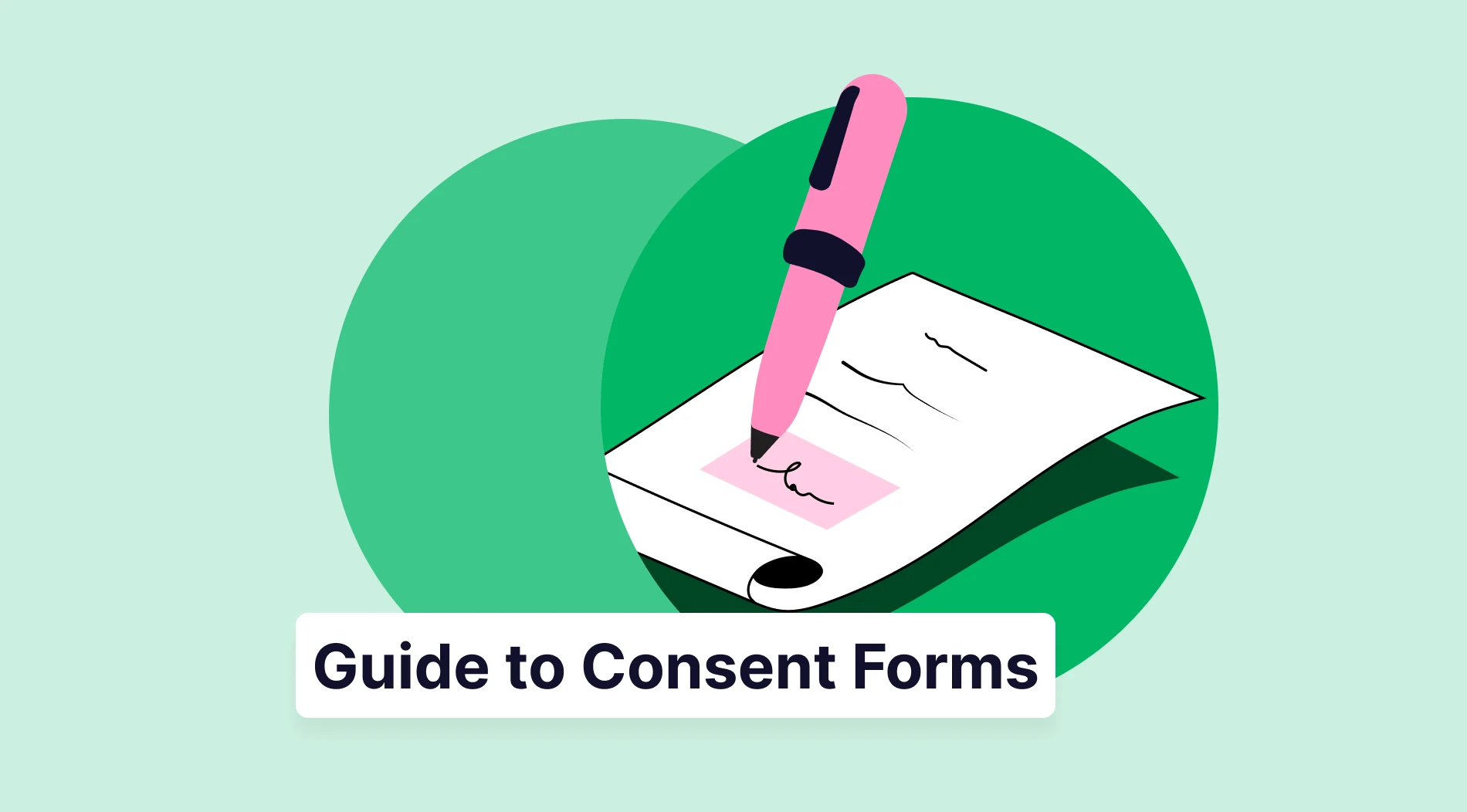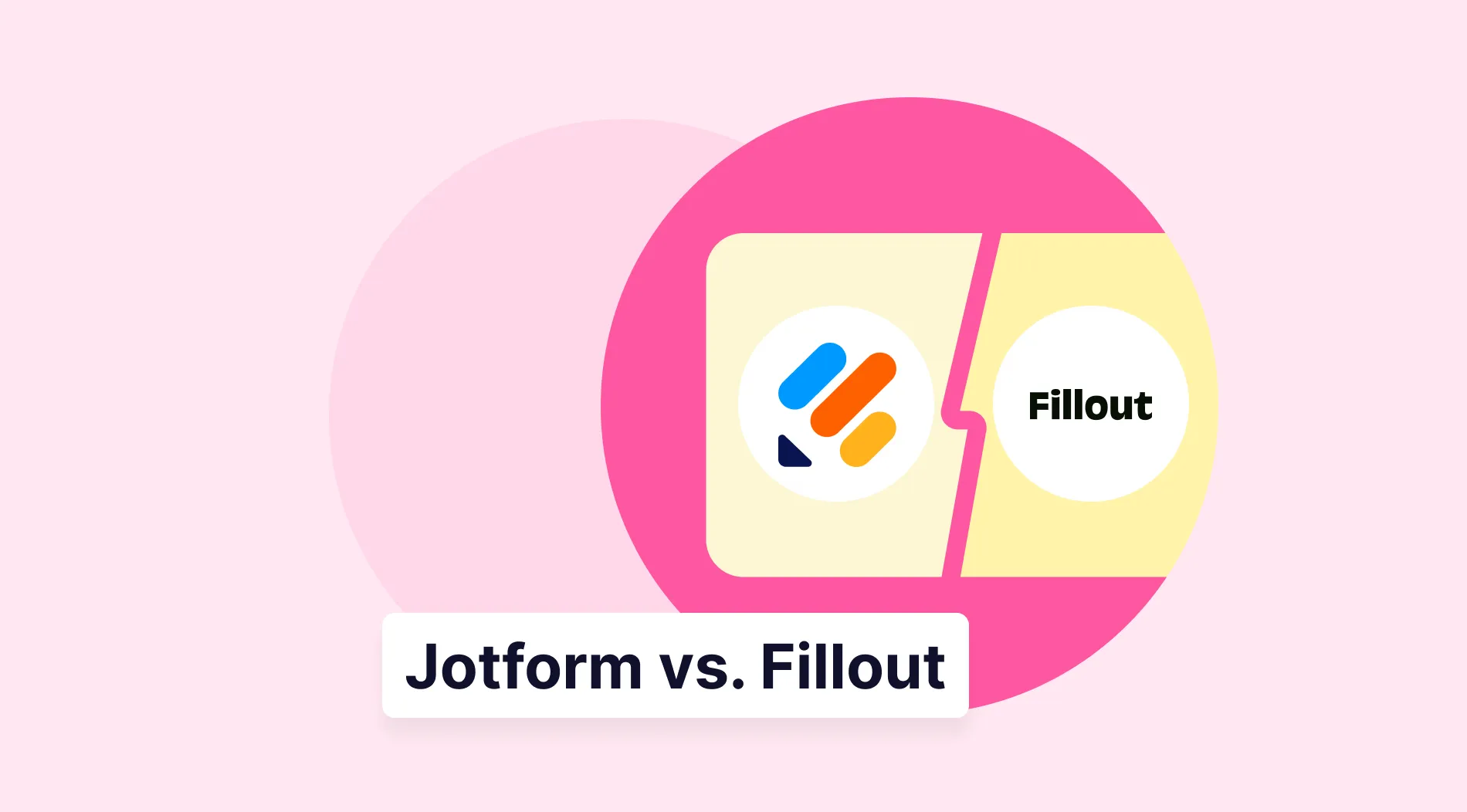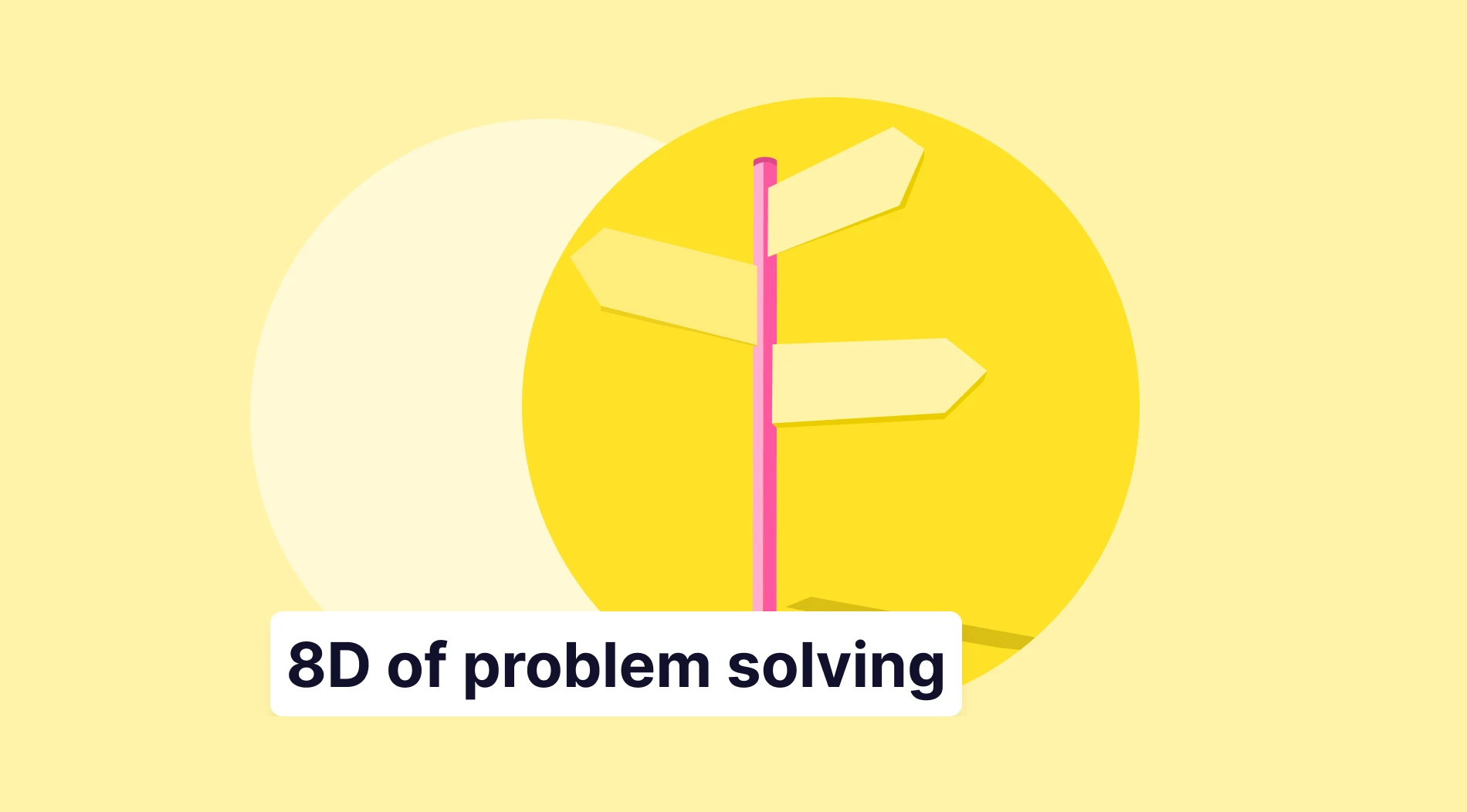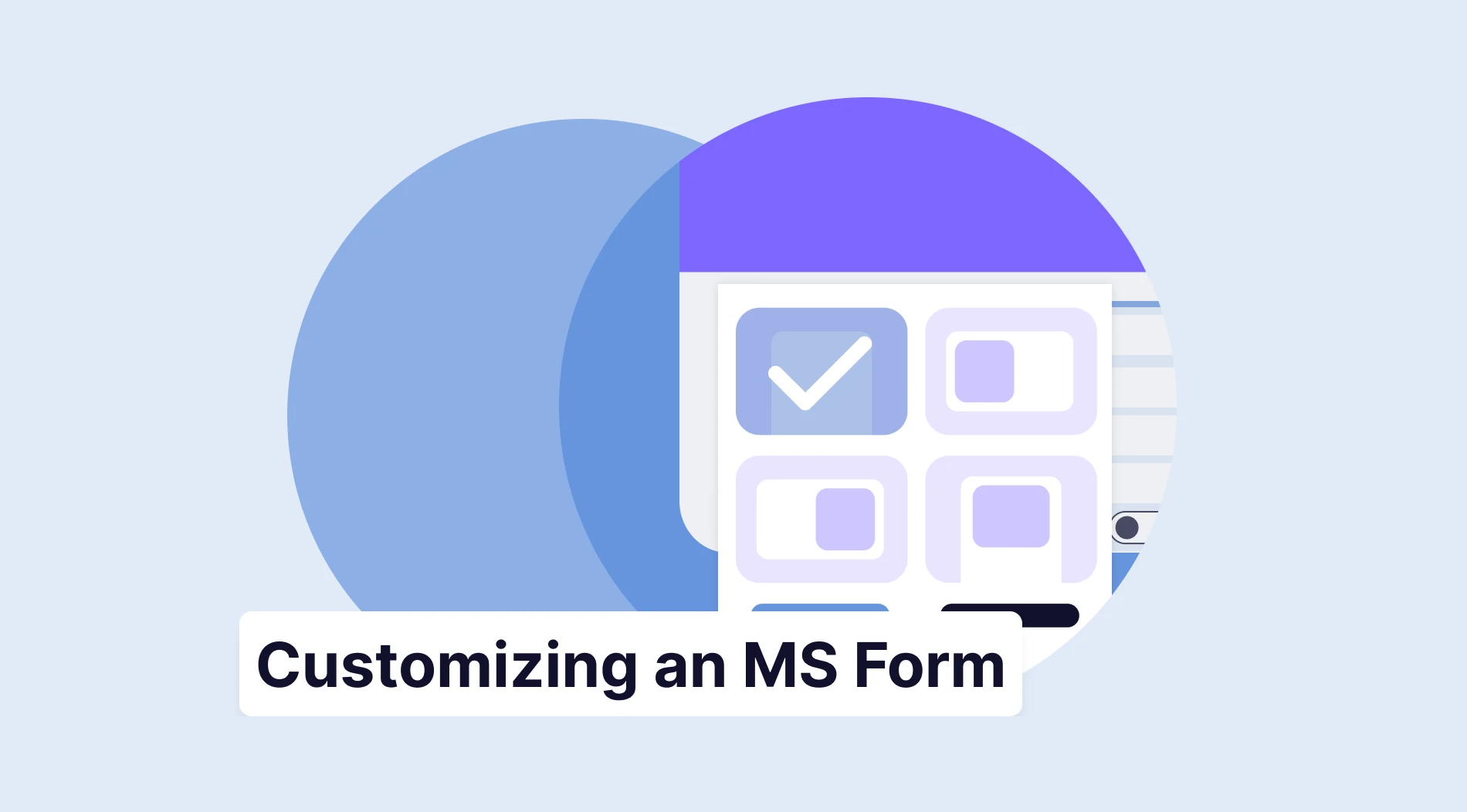Whether you manage a website or a healthcare institution today, you will come to a point where you need to get explicit permission from people. Of course, it is not a matter of getting permission. A well-prepared consent form protects personal rights, provides you with legal protection, and builds mutual trust. A poorly prepared form, on the other hand, can cause you trouble in the future.
In this article, we will begin by defining what a consent form is. Next, we examine the various types of consent forms and discuss who typically uses these forms. You can also find out what can be asked on these forms. Finally, we will provide practical and applicable instructions on how to create a consent form online.
What is a consent form?
A consent form is a written document that indicates a person has given their explicit and informed consent to a specific situation, process, or the sharing of information.
The goal here is for the person to know precisely what they are permitting, and for you to be able to document this consent. Especially in cases where personal data is involved, a consent form is not just a piece of paper, but a written indication of rights and responsibilities.
7 Consent form types
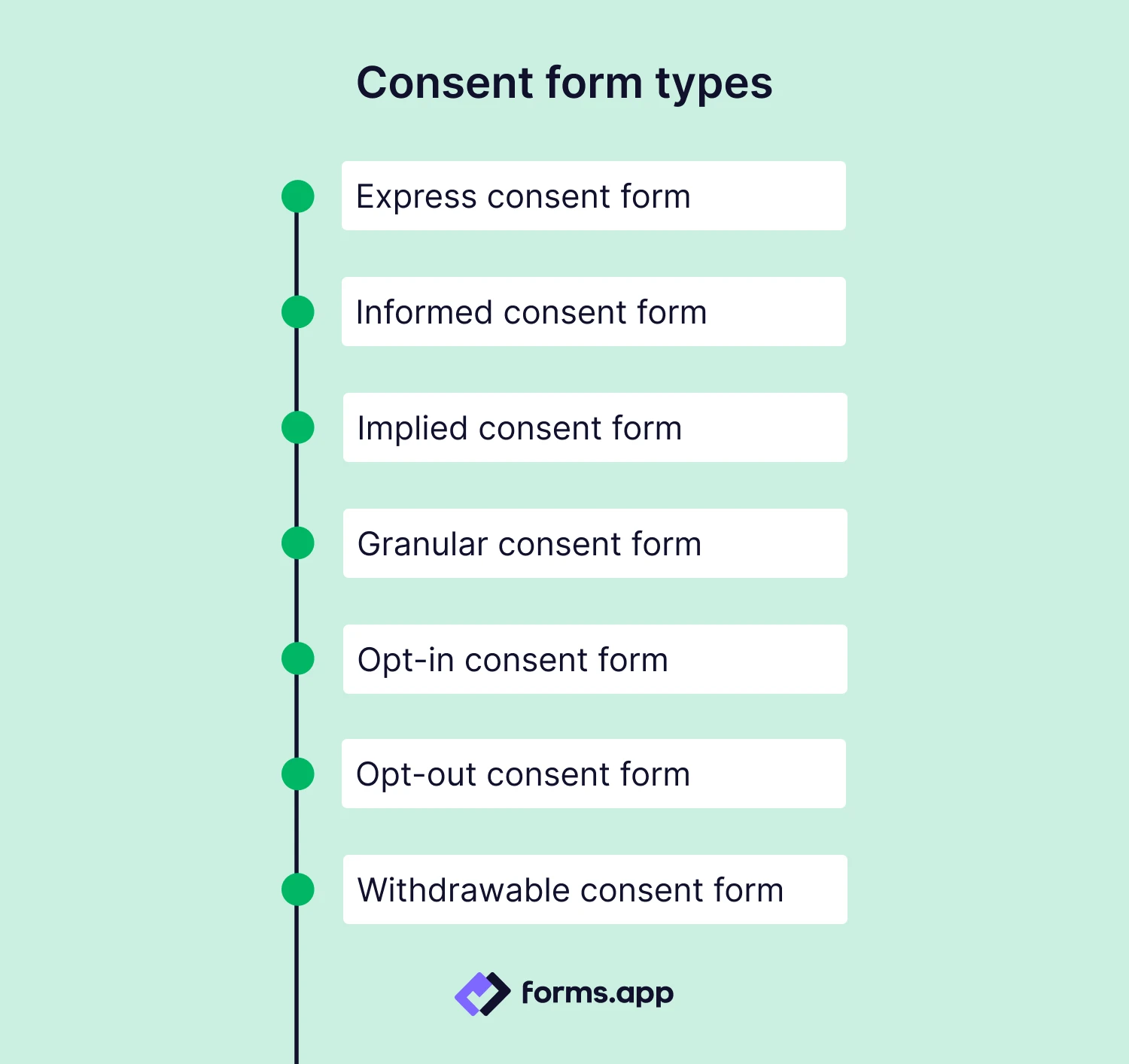
7 Types of consent forms
You have learned about consent forms. But are all consent forms the same? Of course not. These forms are categorized into different types based on the types of permission granted, the level of information disclosure, and the degree of personal control. Below, you can see in detail what the different types of consent forms are:
1. Express consent form
It is a type of consent in which participants give their explicit and informed consent, either verbally or in writing. In this type of consent, the person directly and clearly states that they say “yes” in writing or verbally. A direct written consent, such as “I agree to my data being analyzed and shared with third parties,” is one of the clearest examples of this.
2. Informed consent form
Informed consent form, in its simplest terms, is a type of consent in which the person fully understands the process, risks, benefits, and alternatives before giving their consent. In this type of consent, the person not only provides consent but also knows exactly what they are consenting to.
For example, let's say you are going to have surgery. Before proceeding, the doctor explains all the risks associated with the process to you, and you provide consent after understanding them. In other words, consent given without knowledge cannot be considered informed consent.
3. Implied consent form
Implied consent refers to situations where a person gives (indirect) consent through their actions, even if they have not explicitly given their consent. For example, visiting and navigating a website can be considered implied consent for the use of cookies. However, implied consent is generally not regarded as sufficient in most data protection laws; explicit consent is usually preferred.
4. Granular consent form
Granular consent is a type of consent where a person can approve different kinds of transactions separately. Here, the person selects which data or transactions they allow individually. For example, suppose you only accept email communication from commercial companies and choose the option 'I do not want to be called by phone.' In that case, this is an example of granular consent.
5. Opt-in consent form
It is a method of consent where the user must actively check the checkbox to give consent. In this form, the person actively permits participation in something. In other words, while the default option is no, the person permits by choosing yes. It is widely used in areas such as marketing emails, cookie preferences during sign-up, and application permissions.
6. Opt-out consent form
In opt-out consent forms, the system works in the exact opposite way to opt-in consent forms. The person is considered to have given consent by default, but can opt out if they want. For example, on some sites, an email is automatically sent, but an “unsubscribe” option is offered. In short, the user’s consent is assumed; if they do not wish to proceed, they must exit on their own.
💡 Remember! This method is not considered sufficient under many data protection laws; explicit consent is preferred.
7. Withdrawable consent form
As the name suggests, revocable consent is a type of consent that allows a person to withdraw their consent at any time. In other words, in this type of consent, no matter what you consent to today, you have the right to withdraw it if you change your mind. At the same time, laws such as GDPR also make this mandatory.
💡 Especially in online registrations or shopping, withdrawable permissions are very useful because they give people more control and create trust.
Who can use consent forms?
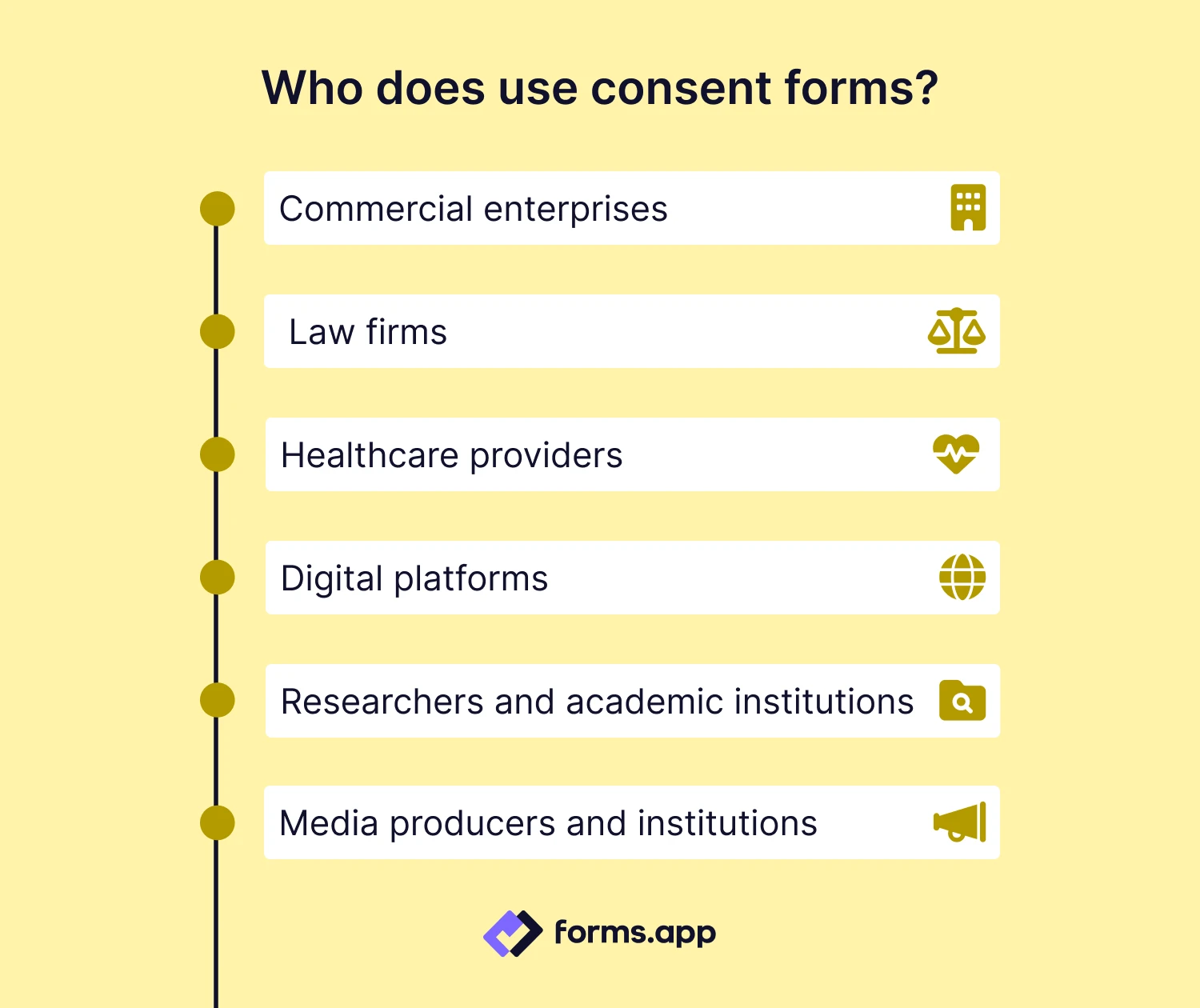
Consent form use cases
In our daily lives, we give consent many times without even realizing it, such as when taking a photo at an event, registering for an application, or visiting the doctor. However, if an institution is involved, this consent must be in writing. That is why the consent form has become a life-saving tool in many different areas. So, who uses these forms and what do they use them for?
1. Commercial enterprises
When companies want to send e-mails to their customers, offer campaign offers, or use their data, they need a consent form. It is a method that we have all come across. When registering for an online shopping site, you may have seen an option such as 'I want to be informed about campaigns and announcements.
2. Law firms
Law-related organizations, such as law offices, consulting firms, and notaries, frequently use consent forms. They use these forms to protect the personal and sensitive information of their clients, to obtain the client's approval in legal procedures, to obtain permission for sharing information with third parties, and to obtain representation authority in legal processes.
3. Healthcare providers
Hospitals, clinics, family physicians, dentists, psychologists, physiotherapists, and many other healthcare institutions are among the institutions that use consent forms the most. These institutions are required to obtain “informed consent” from the patient before any medical procedure. Procedures may sometimes carry risks, and the person must give consent knowing these risks.
4. Digital platforms
Many digital organizations, including website owners, mobile application developers, digital marketing companies, and social media platforms, utilize consent forms in the digital environment to address various goals. Consent forms are mandatory to comply with legal obligations, ensure data privacy, and protect users' rights when collecting and processing users' data.
5. Researchers and academic institutions
In universities and academic research centers, informed consent is always obtained to protect the rights of research participants. The participant is informed about how the information will be collected and used, and permission is obtained.
To illustrate, I can draw on an example from my own experience. During my university years, a professor of ours gave us an exam that required us to provide subjective answers about a topic. He suggested that we would want to use our answers from this exam in his research and added a signature area to our exam paper where we could indicate whether or not we approved of this.
6. Media producers and institutions
Consent forms can also be used by many institutions or organizations, such as production companies, television channels, advertising agencies, schools, and event organizations, which we can diversify. Unauthorized use of a person's image, voice, or performance can result in legal consequences.
Therefore, written permission must be obtained from individuals included in media content. In this context, organizations also request approval for the use of participants' images and voices in studies such as photography, video, and interviews.
What can you ask in a consent form?
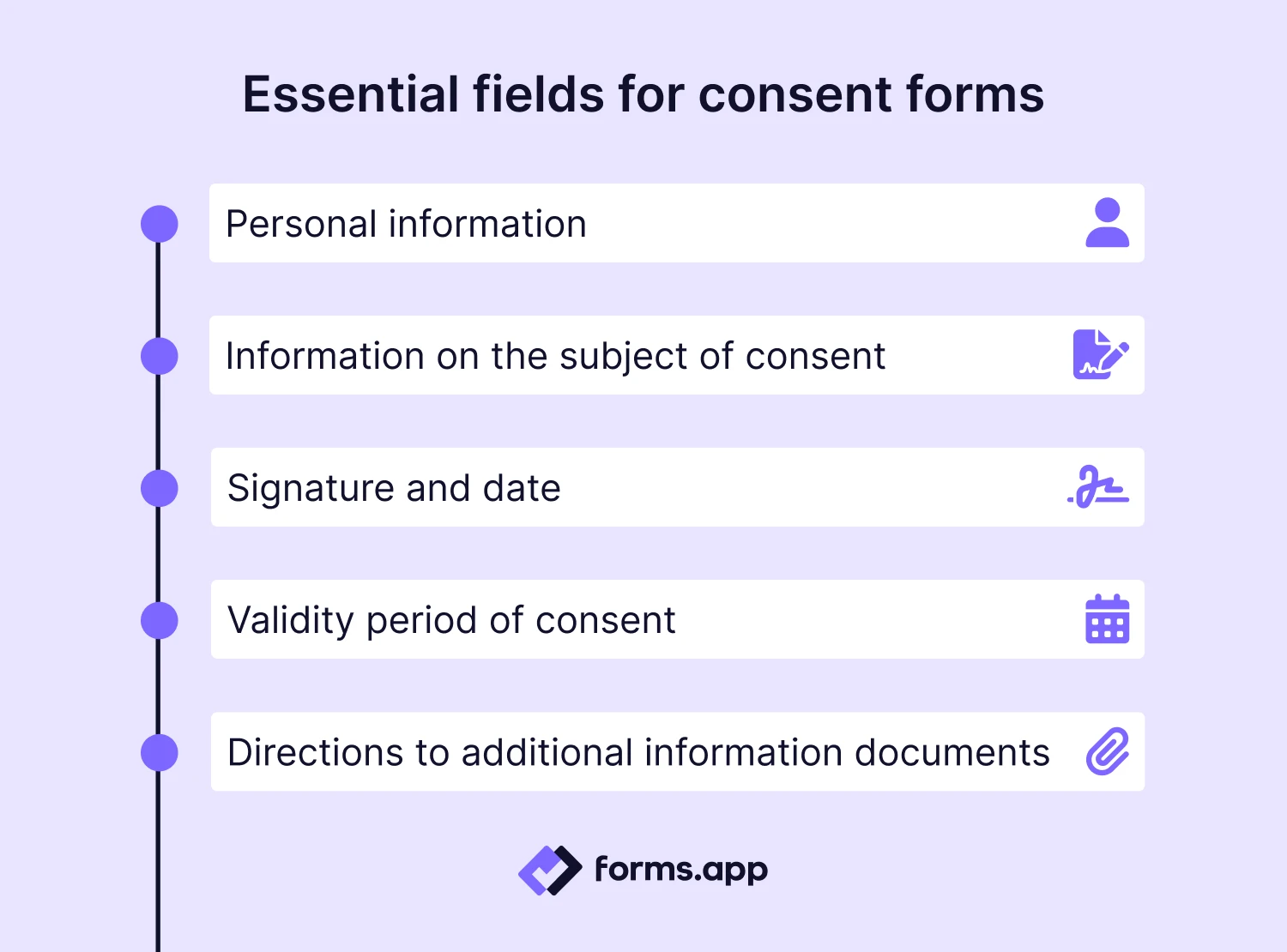
Fields to include in a consent form
Consent forms are a valuable tool that can protect both you and your participants. In addition, they will make your job easier in many ways. In short, a consent form is not just about getting consent, but also about showing respect to the person and ensuring that they fully understand what they are consenting to.
What should be included in the consent form to provide all of these? We explain it to you below:
👤 Personal information: Basic personal information, such as name, surname, e-mail address, and telephone number, is always requested. In some cases, additional information such as age, address, or ID number may be required.
🧾 Information on the subject of consent: It is one of the most critical points. Participants usually want to know what they are approving. Therefore, under this heading, it is clearly explained to the person what exactly they are allowing.
🖋️ Signature and date: You can use methods such as a signature on a physical form, a box check on a digital form, or a digital signature. It is also important because it shows that the person has truly given their consent. It is also essential to write the date next to it, as this allows you to document when the consent was given.
🗓️ Validity period of consent: In the previous article, we discussed why it is essential to include the date next to the signature. Knowing when the approval was received is as important as knowing its validity period for both participants and organizations. Therefore, you should also include this information on your form.
📎 Directions to additional information documents: Finally, if your participants wish to obtain more detailed information, you can specify on the form how they can access the privacy policy, terms of use, or other essential documents. In this way, you can adopt a transparent approach and establish mutual trust.
How can I create a consent form with forms.app?
Sometimes we are not aware of what we are approving, but in many cases, we are asked for approval. And when institutions, companies, or official affairs are involved, this approval must be in writing. So, how do you prepare your permission form for such situations? It may not sound very easy, but it is possible how to create an online consent form by following the basic steps below:
Step 1: Determine your goal
To create a free online consent form, you must first clarify what you will use the form for, as the language, question structure, and information fields will be tailored accordingly. For example, are you requesting permission for healthcare services or the processing of personal data? If you clearly define this goal first, you can then select the fields to add accordingly.
💡 Writer’s note: If you are using the same consent form for different purposes, it would be better to write them separately, as someone may want to give permission only for one and not the other.
Step 2: Log in or sign up for forms.app
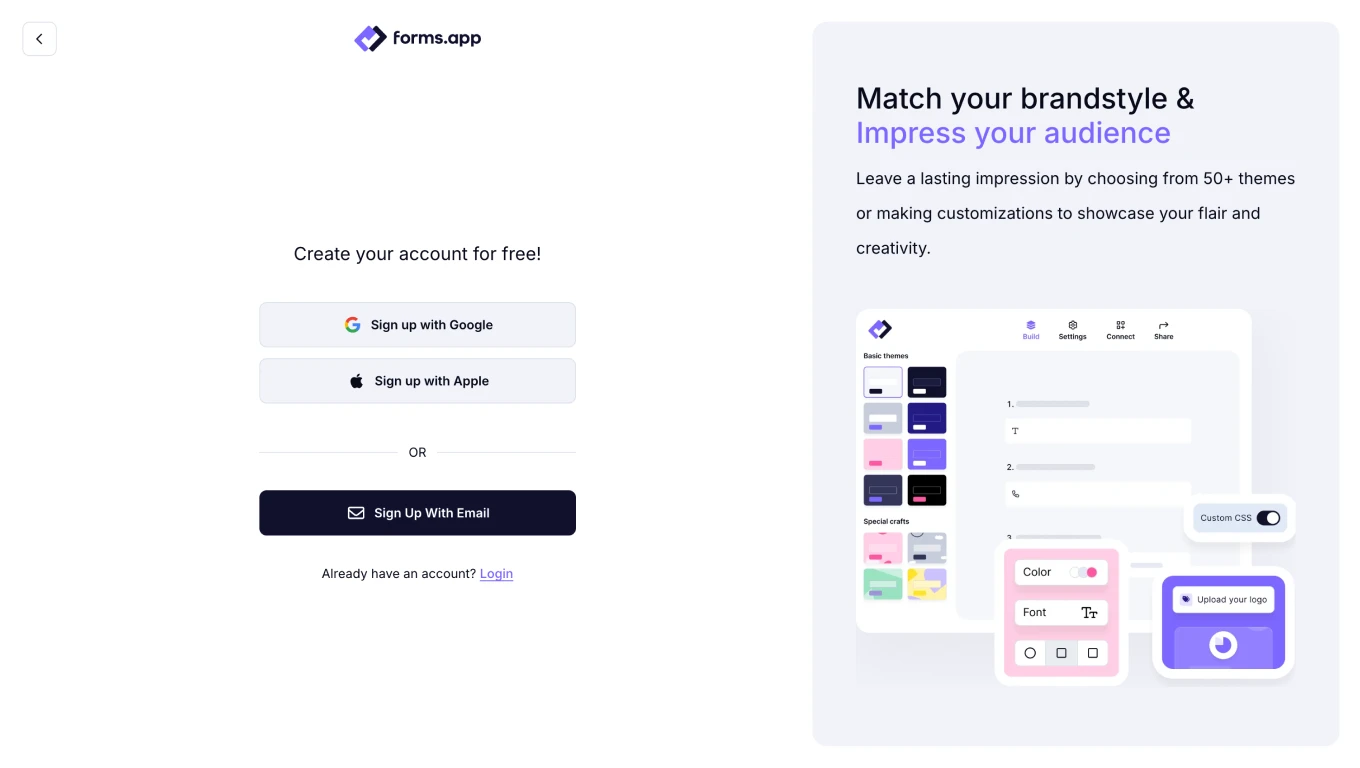
Open your forms.app account
Creating an account using the forms.app online form maker is a pretty simple process. To create an online consent form, you’ll first need to log in or sign up. If you don’t have an account, creating a free account takes seconds. If you already have an account, you can head straight to the platform and start creating a consent form. You can also sign in using your Google or Apple accounts.
Step 3: Start from scratch, choose a template, or create with AI
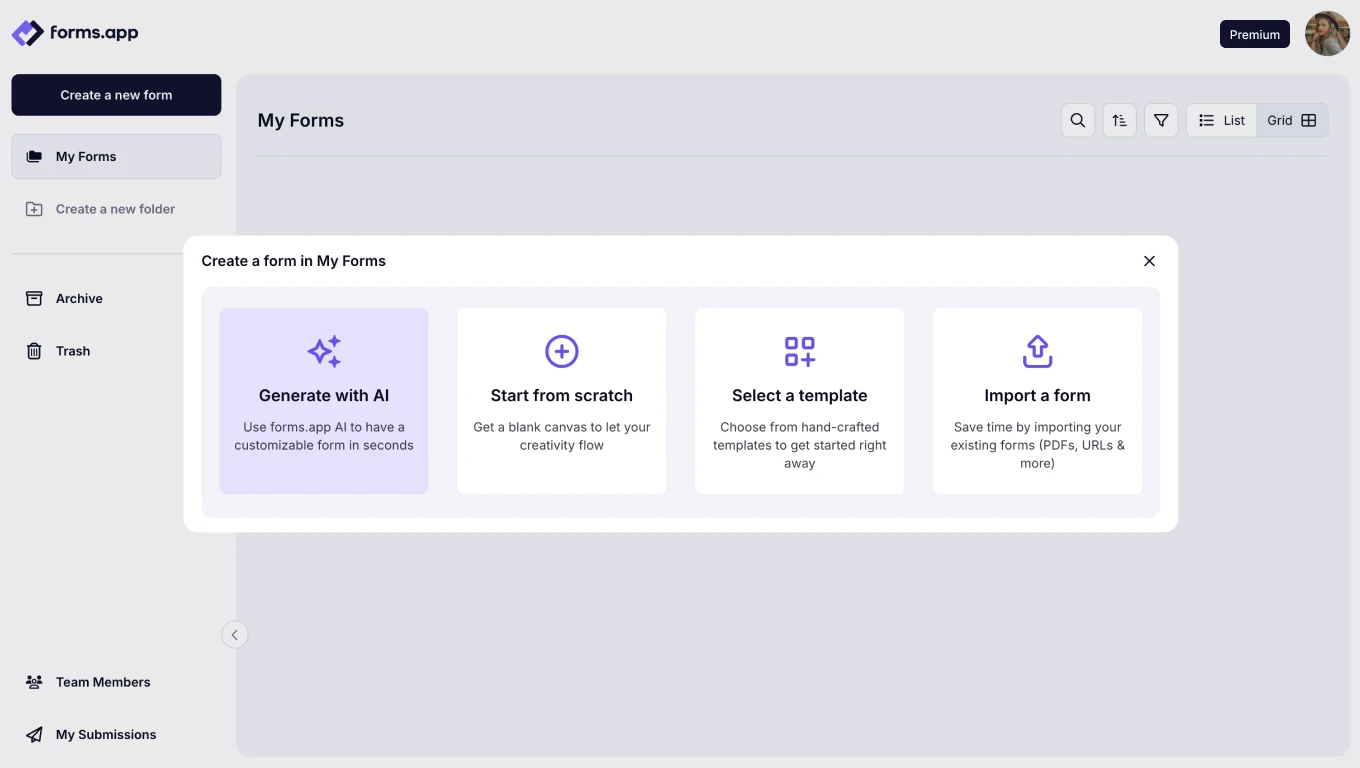
Choose a way to start
After logging in, click the My Forms button to create a consent form online. At this stage, you will find various options to create your form under the Create Form heading. Additionally, there are ready-made, free consent form templates suitable for various areas of use in forms.app. You can choose one of these consent form templates for free and edit it to suit your preferences.
💡Writer’s note: If I were you, I would consider using forms.app’s AI form builder feature to create my consent form. I think it will speed up the process and get you straight to the content you want.
Step 4: Add confirmation and question fields
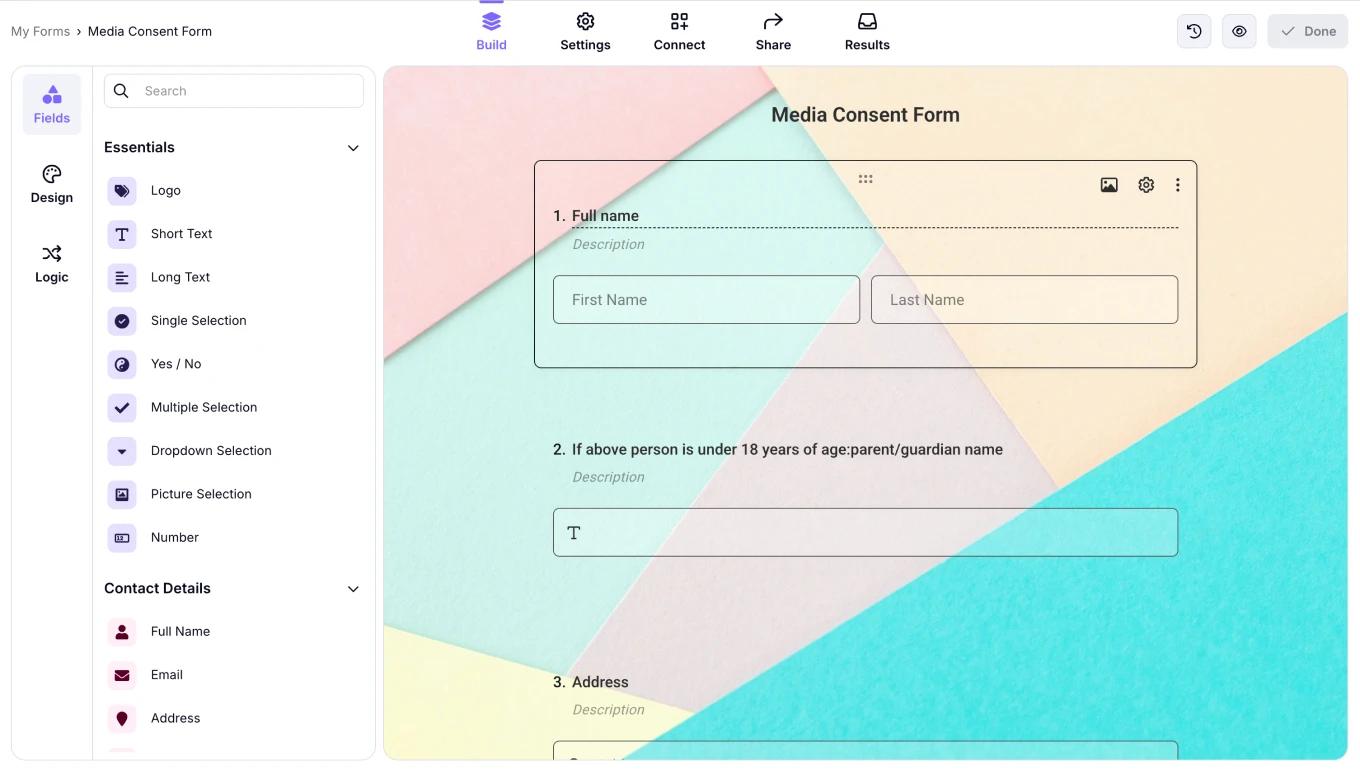
Add essential fields
We can say that this is the most essential when creating a consent form. You can add name-surname, e-mail address, phone number, explanatory text (What data will be collected and what will it be used for?), a checkbox, and a signature field section to your form.
Of course, it is not necessary to stop at just name, e-mail, checkbox, and signature in the consent form. Other essential fields can be added to the consent form. Of course, these also change according to the purpose of the form. In this sense, forms.app offers various question types, including multiple-choice and short-answer questions.
Step 4: Customize the form design
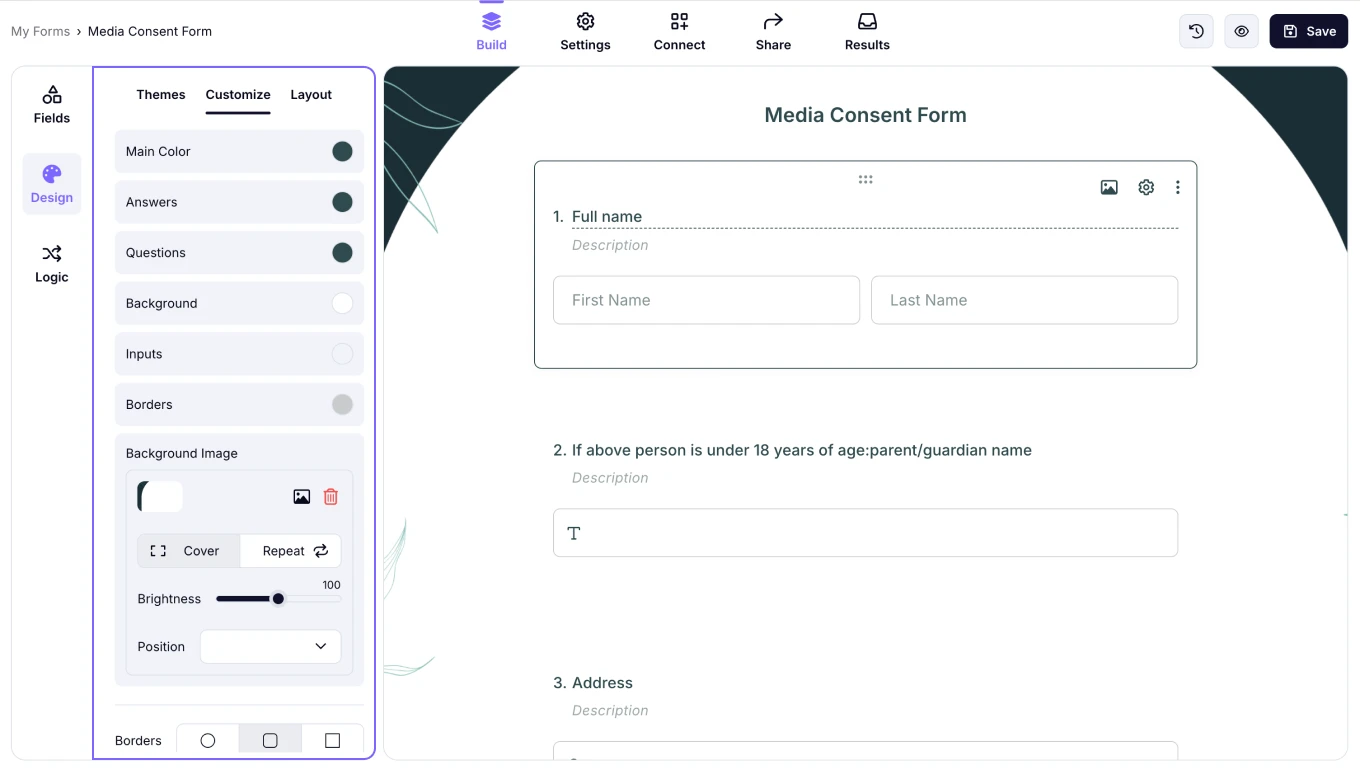
Change your consent form’s design
Now that you have added the relevant question and consent fields, you can customize your online consent form design as you wish. forms.app offers a wide range of options for form design. You can find many options in the design area, from fonts to colors. You can also add an area where participants can upload files or a free-text section where they can provide additional explanations.
💡 Writer’s note: At this stage, I recommend avoiding a complex design whenever possible and opting for a simpler one, as people often abandon complex forms.
Step 5: Share your form with your audience
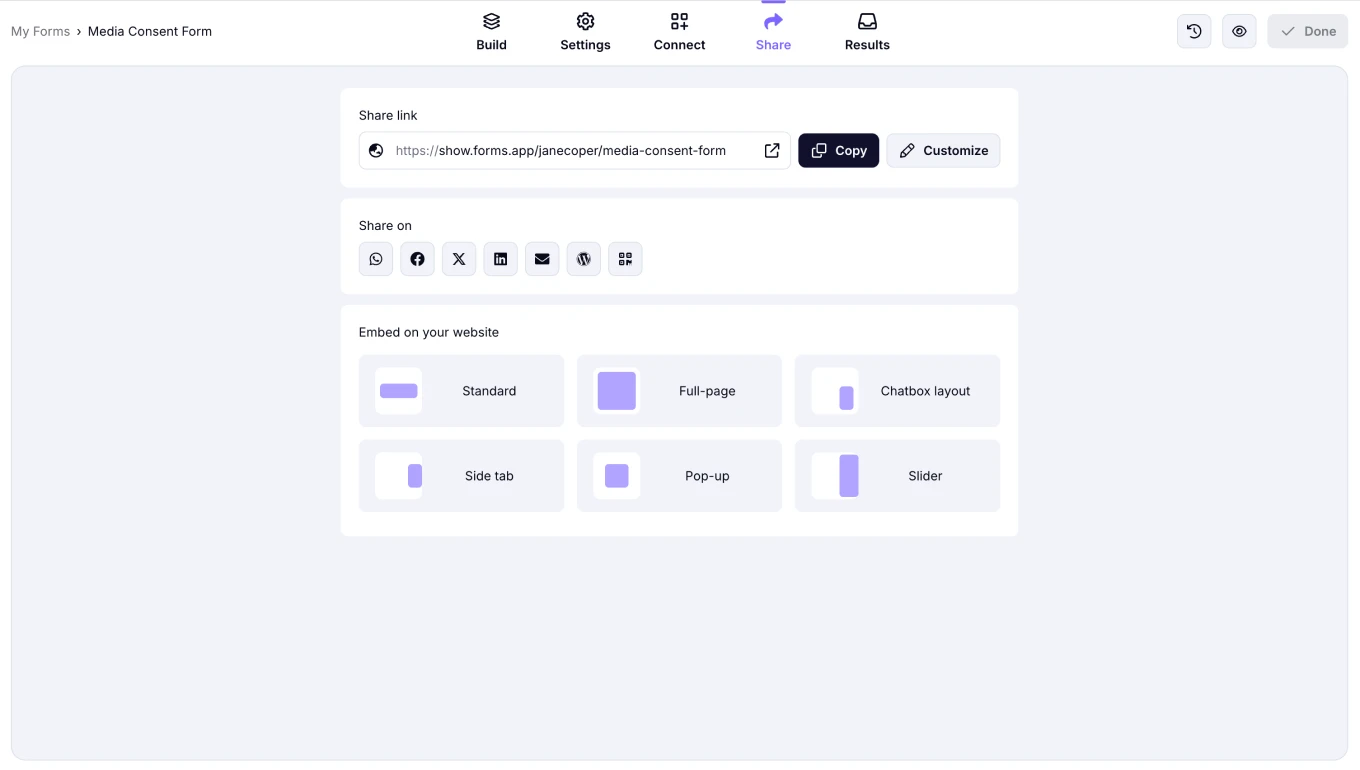
Share your consent form
Now that you have completed your consent form, share it with your participants. You can submit your online consent form for approval to your participants using forms.app’s various sharing options.
You can share your form on popular social media platforms like Facebook, Twitter, LinkedIn, and WhatsApp. You can also copy and embed your form link on your website or share it via SMS, email, or a QR code that they can scan with their mobile devices.
💡 You can also refer to our consent form tips article for additional guidance on creating consent forms effectively.
Conclusion
You have learned that consent forms are not just a formality, but represent much more than that. Now you will not just add boxes when preparing a consent form. You also understand the importance of establishing a transparent, trustworthy, and legally compliant structure.
In this article, we first explained what consent forms are. Then we talked about the types of consent forms and who commonly uses them. We have also included suggestions for what you can add to your consent forms. And finally, you learned how to create an online consent form.
A consent form is prepared to clearly show the other party what they are approving. This form must include:
- Basic personal information (the person's name, surname, and contact details)
- Clearly state the subject of the permission
- A signature or digital approval box, along with date information
You have obtained consent while processing the data, but the question of "how" is very essential. In this sense, forms.app is a GDPR-compliant form creator that simplifies these processes for you. According to GDPR, you need to pay attention to the following points:
- Consent must be given openly and freely.
- Consent must be obtained separately for each thing.
- The right to revoke must be provided
- When and what people give consent to should be recorded.
- There should be a clear link to a privacy policy.
The concept of informed consent and waiver is often confused. However, an informed consent form, as the name suggests, means that all details are explained to the person and that they provide conscious approval. Signing the text or not is entirely up to the person. However, a waiver is different; here, the person declares that they consciously and willingly give up a right or a legal demand.
Yes, you can create simple and effective consent forms with the free plan offered by forms.app. If you're a beginner or have only basic needs, the free plan will be more than enough for you.
forms.app, your free form builder
- Unlimited views
- Unlimited questions
- Unlimited notifications
